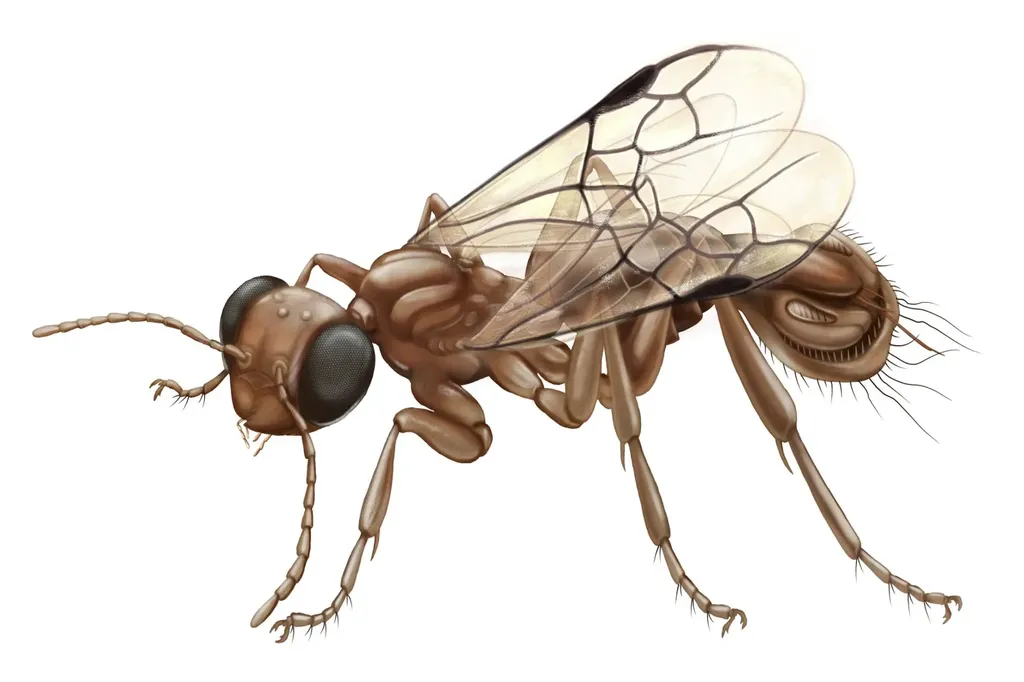In the heart of Assam, India, researchers are unlocking the secrets of an ancient plant defense mechanism that could revolutionize pest control in the agricultural sector. Jyotsna Dayma, a scientist from the Department of Agricultural Biotechnology at Assam Agricultural University, has been leading a team that has made significant strides in understanding how black gram plants fend off one of their most notorious enemies: the bruchid beetle (Callosobruchus maculatus).
The team’s latest findings, published in the journal Scientific Reports (known in English as “Scientific Reports”), shed light on the insecticidal properties of defensin proteins found in black gram and other legumes. These small, cysteine-rich peptides have long been known to play a role in plant defense, but their potential as insecticides has remained largely unexplored—until now.
Dayma and her colleagues cloned and sequenced full-length cDNAs of defensin genes from multiple legumes, identifying two sequence variants. Variant 1 (DefV1) was found in black gram, pea, cowpea, and common bean, while variant 2 (DefV2) was identified in mung bean, chickpea, and pigeon pea. The variants exhibited a high degree of homology with a previously reported insecticidal defensin gene, suggesting a shared evolutionary origin.
But the real breakthrough came when the team conducted computational analyses, including molecular docking, visualization, and molecular dynamics (MD) simulations. These analyses demonstrated enhanced interactions between DefV1 and bruchid α-amylase, an enzyme crucial for the beetle’s digestion of seeds. “The mechanism appears to be a ‘Cork in the Bottle’ inhibition, where the defensin protein blocks the active site of the enzyme, preventing the beetle from breaking down the seed’s nutrients,” Dayma explained.
To test their findings, the researchers conducted insect bioassays using artificial seeds supplemented with DefV1. The results were striking: no adult beetles emerged from the treated seeds. This suggests that DefV1 could be a highly effective insecticidal agent, offering a natural and potentially sustainable solution to bruchid infestations.
The implications of this research are significant for the agricultural sector, particularly for the legume industry. Bruchid beetles are a major pest of stored legume seeds, causing substantial economic losses worldwide. Current control methods rely heavily on chemical insecticides, which can have environmental and health impacts. The discovery of DefV1 offers a promising alternative, one that is not only effective but also environmentally friendly.
Moreover, the research opens up new avenues for genetic improvement of bruchid resistance in legumes. By introducing DefV1 into susceptible legume varieties, breeders could develop new cultivars with enhanced pest resistance, reducing the need for chemical pesticides and improving crop yields.
Dayma and her team’s work is a testament to the power of interdisciplinary research, combining computational biology, molecular biology, and entomology to tackle a real-world problem. Their findings not only advance our understanding of plant defense mechanisms but also pave the way for innovative pest control strategies in the future.
As the world grapples with the challenges of climate change, food security, and environmental sustainability, research like this offers a glimmer of hope. It reminds us that nature often has its own solutions, and with a bit of scientific ingenuity, we can unlock these solutions to build a more sustainable future.
In the words of Dayma, “This is just the beginning. There is so much more to explore in the world of plant defensins, and I am excited to see where this journey takes us.”

